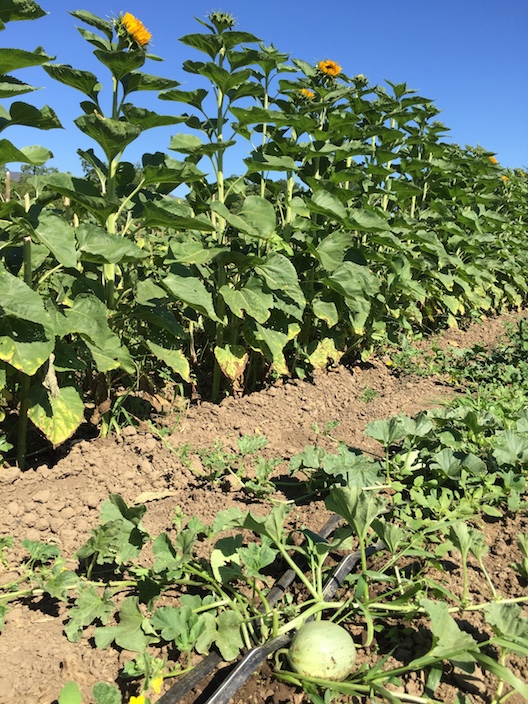We know that many of you are wondering where the tomatoes are and why you are “still getting beets and cabbage in your boxes.” We also note that some of our members are happy to continue getting something green for awhile, like a cabbage… As one of our members commented, “every single selection is someone’s favorite or someone’s least favorite.” Even though the CSA boxes sometimes have the same vegetables in them for a few weeks, taken as a whole, the variety of fruits and vegetables in the boxes from season to season results in a remarkably diverse cuisine, providing healthy inspiration to your creativity and ingenuity in the kitchen.
June is always a month when the CSA boxes reflect a transition from cool weather crops to summer crops. You can follow that transition from afar… In June, the summer crops are growing so fast that you can see changes from day to day, but on the other hand, the spring crops are slowing down and starting to be a little peaked. By the end of June, the greens are long gone and the first ripe tomatoes and melons can be found if one goes on a determined search from one end of the row to the other. By July, the yield of tomatoes is growing exponentially, from one or two cherry tomatoes, to a few boxes that go to farmers markets, to enough that we could literally fill your kitchen with them, multicolored and vibrating with summer heat and energy.This week’s box says “summer” with every item. We hope that you enjoy it!

Melons growing in the shade of a bed of sunflowers.
The Corn Earworm
Full Belly hasn’t grown much sweet corn in the last few years. We cut back on our corn plantings because of the drought. Now that we have a bit of sweet corn again you may see it in your boxes from time-to-time. Several of our members last week (when corn was in the boxes) wrote and asked us about the worms in the corn.
There are 2 different types of worms that we sometimes see in our corn. One of them attacks the tip (the corn earworm) and the other one attacks from the base (the army worm). Our crew has been instructed not to pack corn if it has armyworm, but we have a pretty high tolerance for the worms in the tip of the corn.
The earworm is difficult for both organic and conventional farmers to control because it spends most of the time safety protected inside the corn shuck. Growers using insecticides are advised to drive their sprays deep into the silks of the corn, using ground applications that are directed towards the corn ears at high pressure.
The corn earworm, which you will find in the tips of our organic corn, is a good sign that the corn has been grown organically. We ask our members to just cut off the tip if there is a worm there. You can feel the corn tip and determine how deep the damage is. We won’t send corn that has a lot of damage, but sometimes there will be a bit of damage in the tip, and you will need to cut it off.
We have known kids to come to the farmers market simply to collect the corn earworms. Other customers, who are accustomed to the corn earworms say that they will not eat corn that doesn’t have worms in the tip because they are concerned about chemical exposure.
